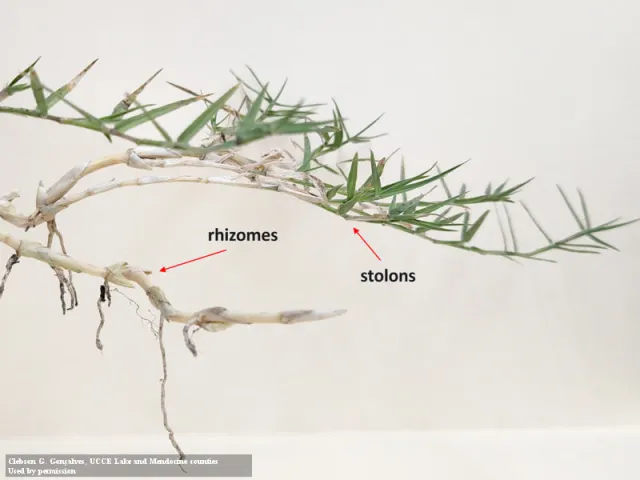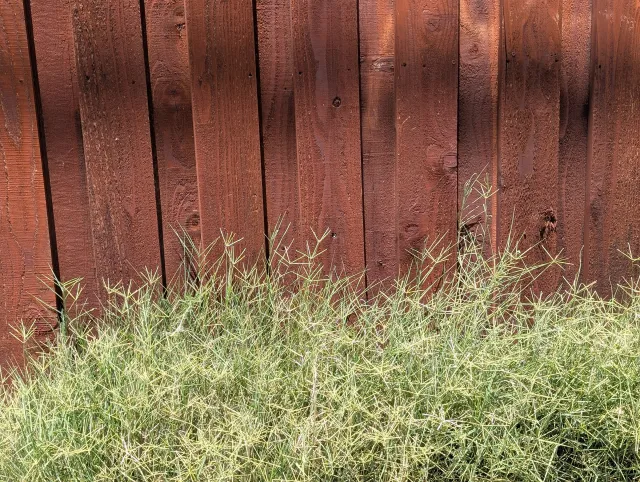There are many weedy grasses that can invade a lawn or landscaped area, but bermudagrass is one of the most hated and difficult to control weeds. It’s a low-growing, wiry perennial that has above and belowground structures which are both capable of rooting and growing into new plants.
The secret to bermudagrass's success is that these creeping shoots, the stolons and rhizomes, form new plants as they grow out from the main plant or when they are cut. If you try to pull out bermudagrass and leave fragments of stolons and rhizomes in moist soil, they can regrow.

You can differentiate bermudagrass from other weedy grasses by its upright flowering stems topped with three to seven spikelets arranged in a whorl.
To help you better control bermudagrass, UC IPM recently updated the Pest Notes: Bermudagrass fact sheet. Authored by UCCE advisor Clebson Gomes Gonçalves, the revised publication now includes further detail of nonchemical control methods and currently available herbicides. New photographs highlighting diagnostic characteristics of bermudagrass have also been added.


